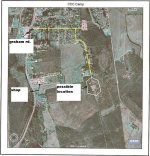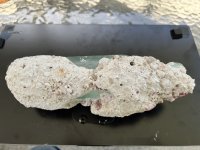Texas Coin Hunter
Jr. Member
- Aug 24, 2007
- 95
- 2
- Detector(s) used
- BH land star & Pioneer EX made by BH & Whites Bullseye ll Pin Pointer
Hi i was contacted here on Treasure Net about where i lived at
in Texas by a fellow on the board and come too find out there
was a Concentration Camp located right under my feet, ready to
be hunted so i contacted a friend of mine which is older than i am
who was born & raised in this town, & he said shure i know where
it's located at because he played there when he was a child, he also
told me how too get there & that the property belonged to his late
uncle, he wanted to know why i was interested in it & i said that i'd
like to take my metal detector there & see if i could locate some
old coins & relics from that area and he said shure, that would not be
a problem since his cousins never did anything w/ the property,
like place fences & such around it, he took a local city map & showed
me how to get there, and prior to him pin pointing i took a program
called : ArcGIS & printed out a aerial map which i printed out prior
to him actually drawing it out on the city map & i was right on
when i pin pointer the location on the aerial map since i had been
up that road several times too where there were 2 upright pillars
which marked the intrance too the camp.
in Texas by a fellow on the board and come too find out there
was a Concentration Camp located right under my feet, ready to
be hunted so i contacted a friend of mine which is older than i am
who was born & raised in this town, & he said shure i know where
it's located at because he played there when he was a child, he also
told me how too get there & that the property belonged to his late
uncle, he wanted to know why i was interested in it & i said that i'd
like to take my metal detector there & see if i could locate some
old coins & relics from that area and he said shure, that would not be
a problem since his cousins never did anything w/ the property,
like place fences & such around it, he took a local city map & showed
me how to get there, and prior to him pin pointing i took a program
called : ArcGIS & printed out a aerial map which i printed out prior
to him actually drawing it out on the city map & i was right on
when i pin pointer the location on the aerial map since i had been
up that road several times too where there were 2 upright pillars
which marked the intrance too the camp.







